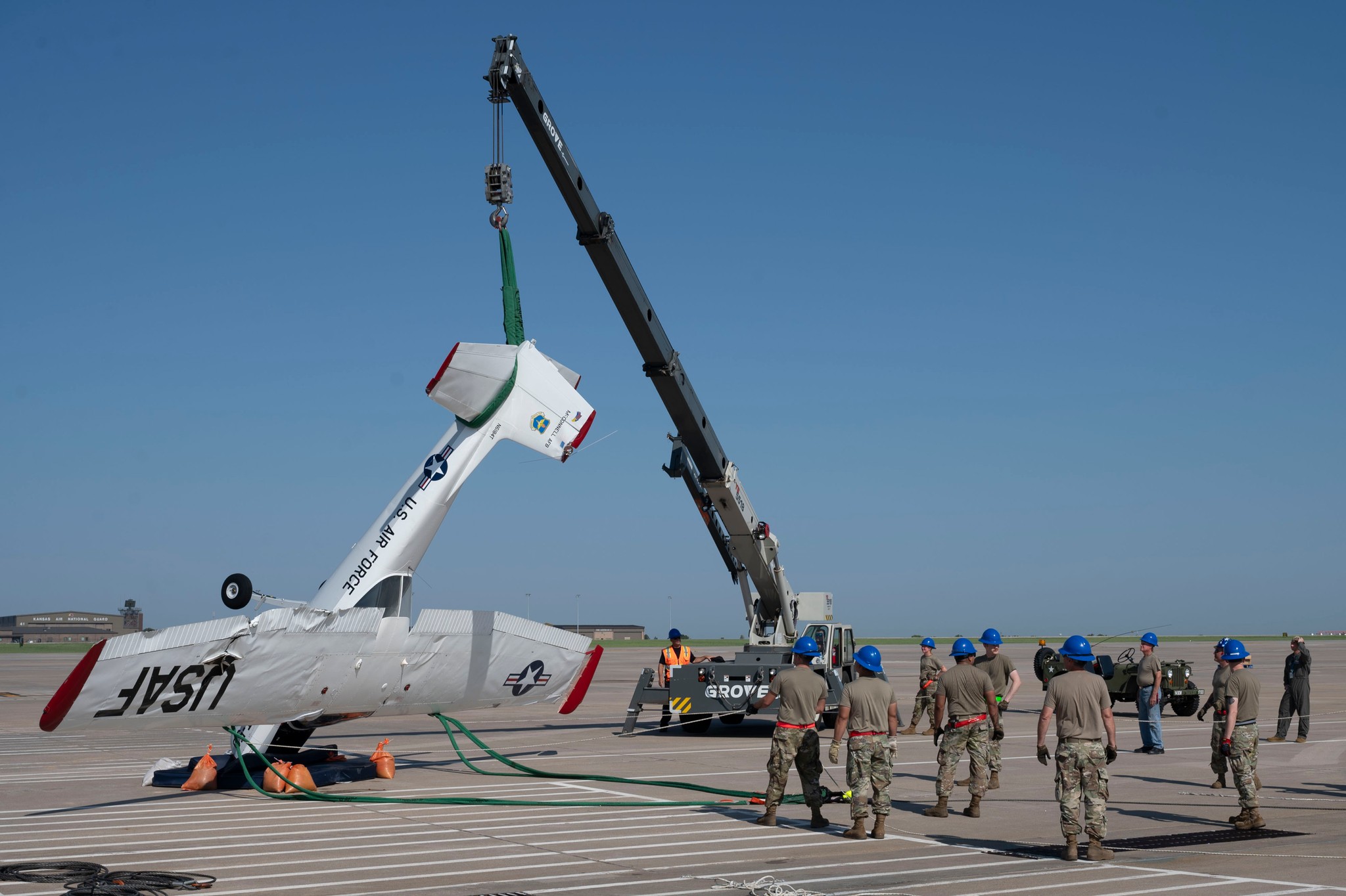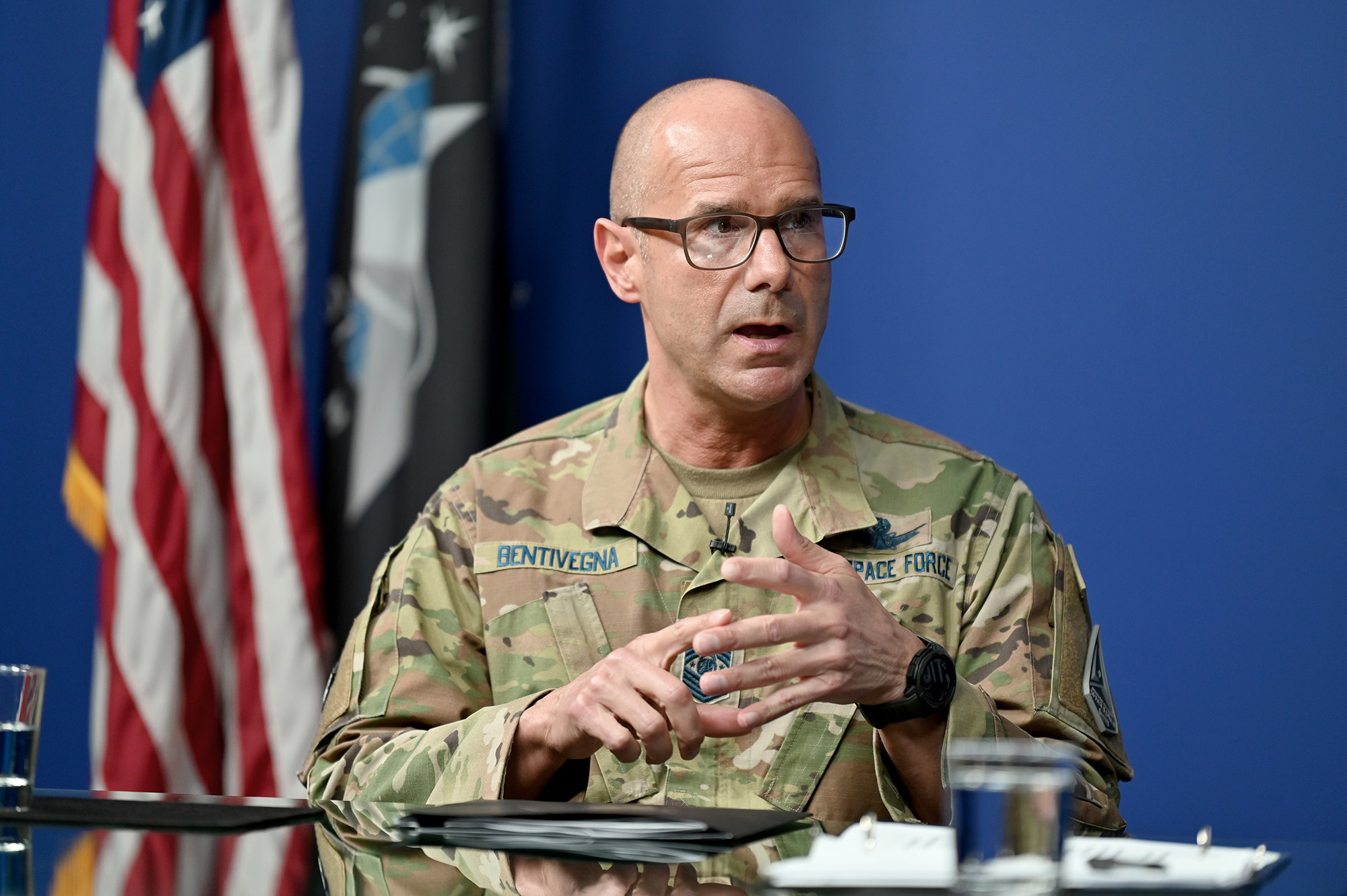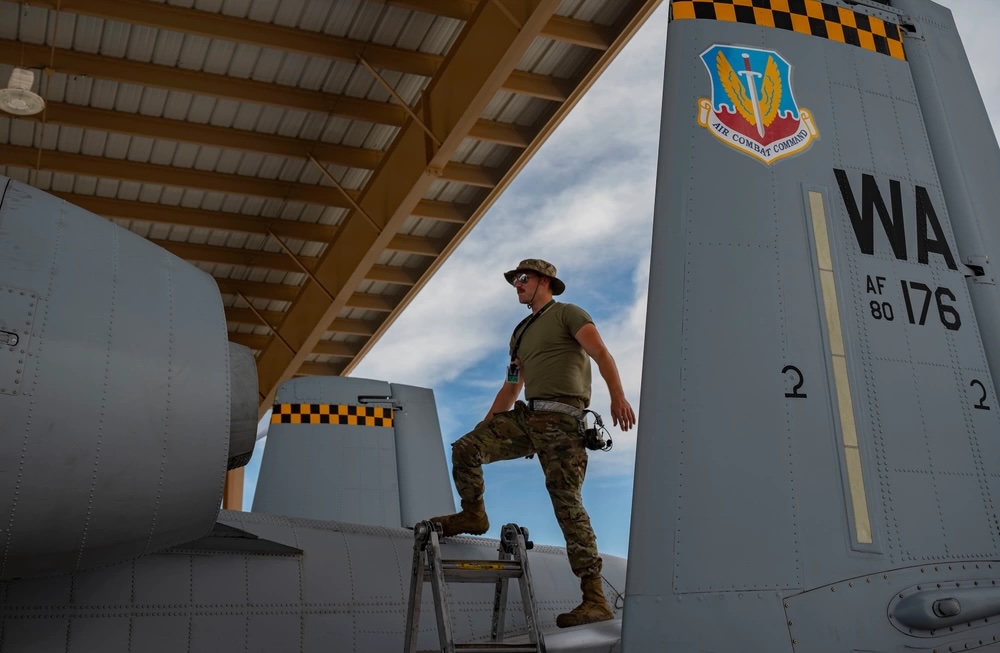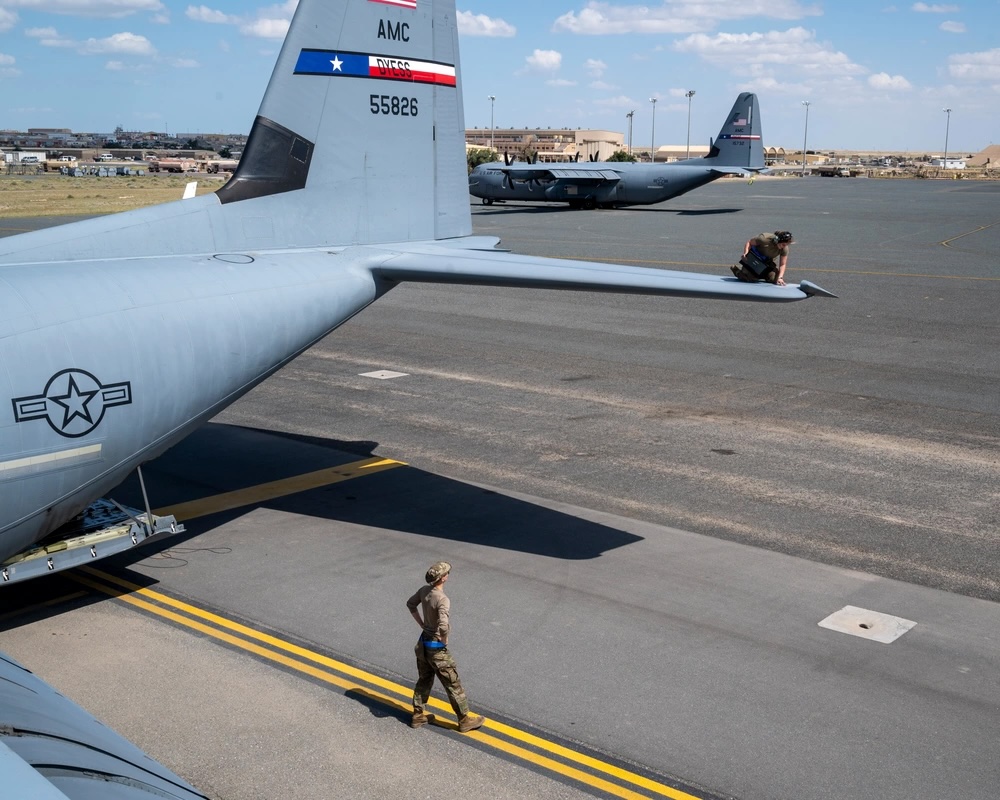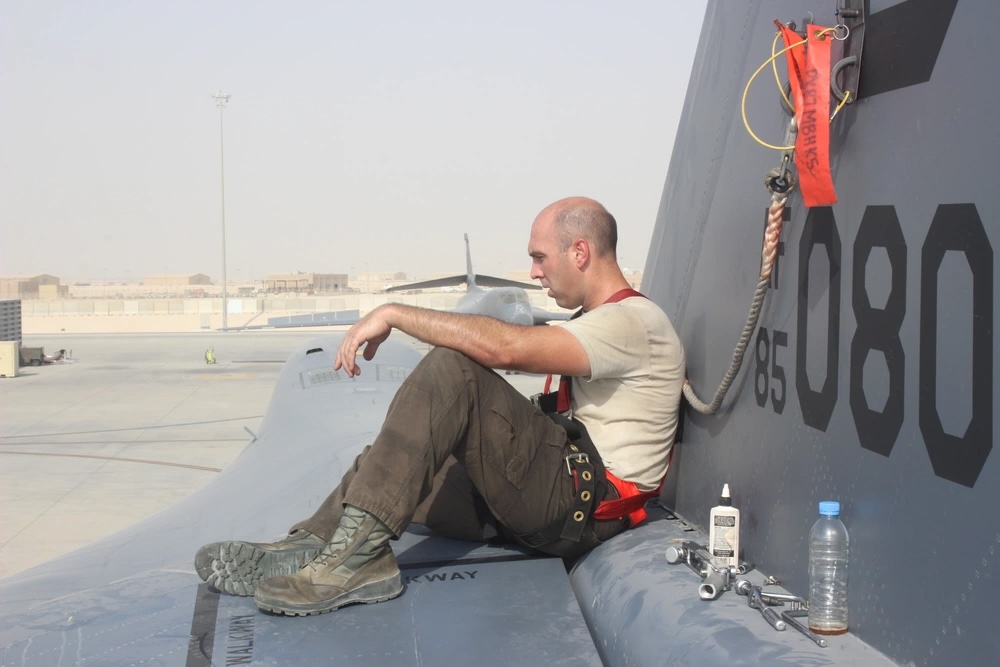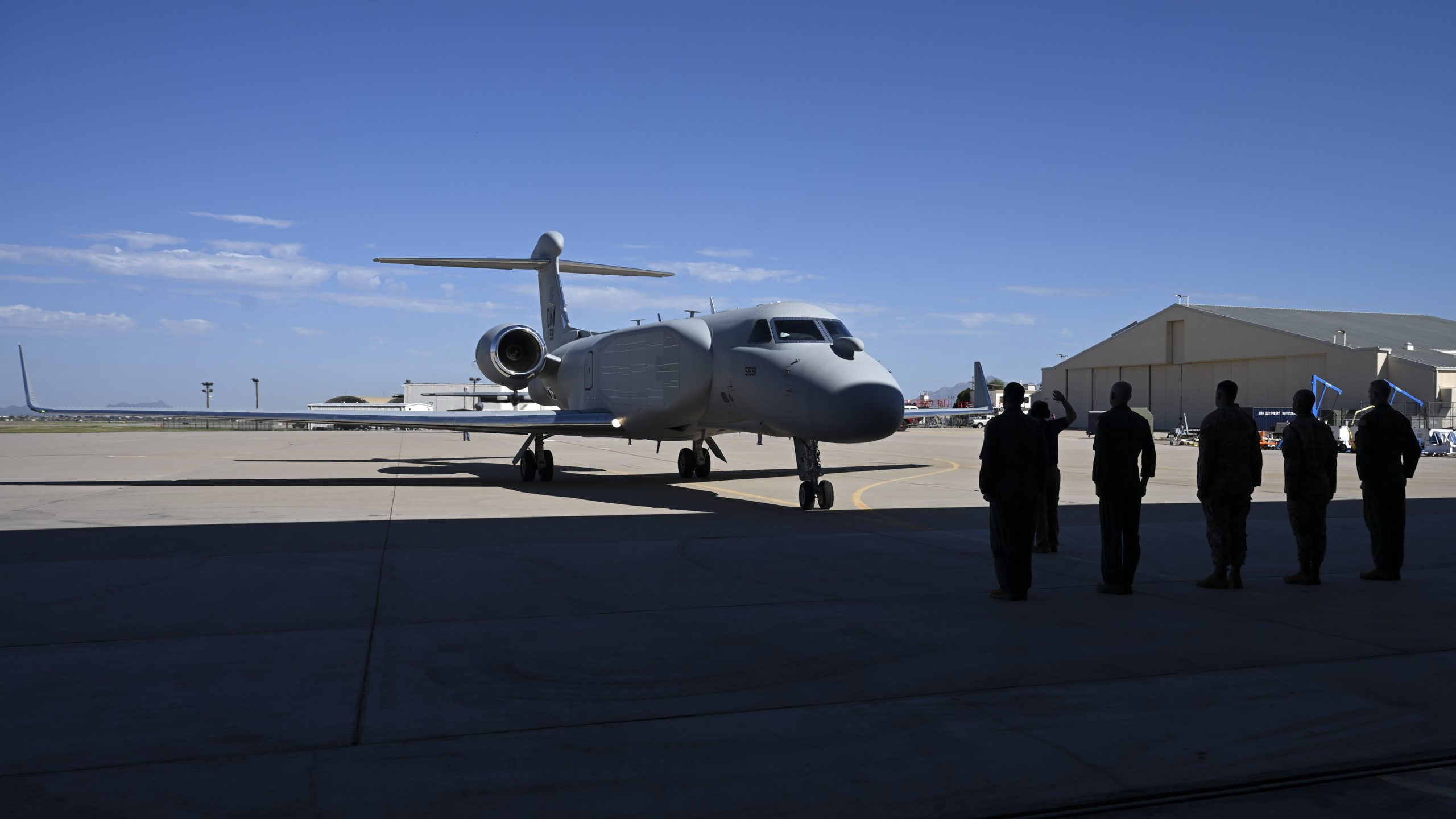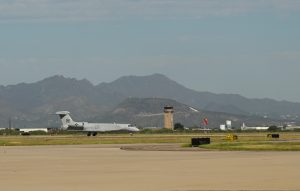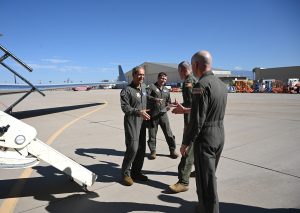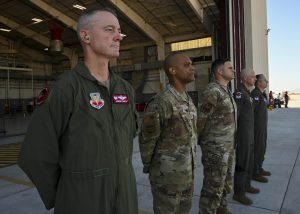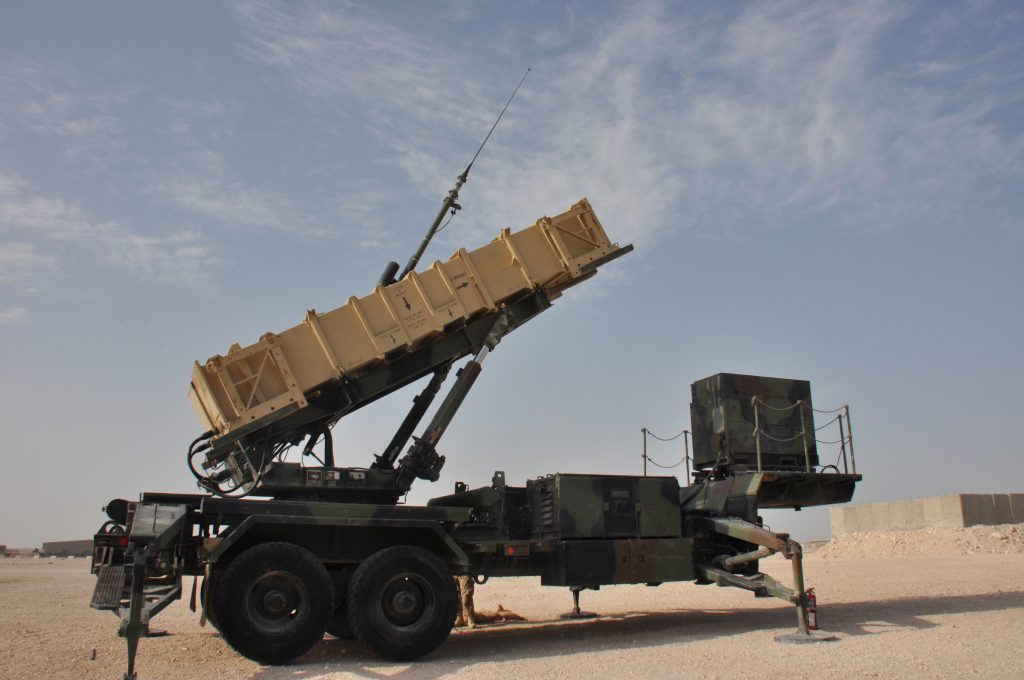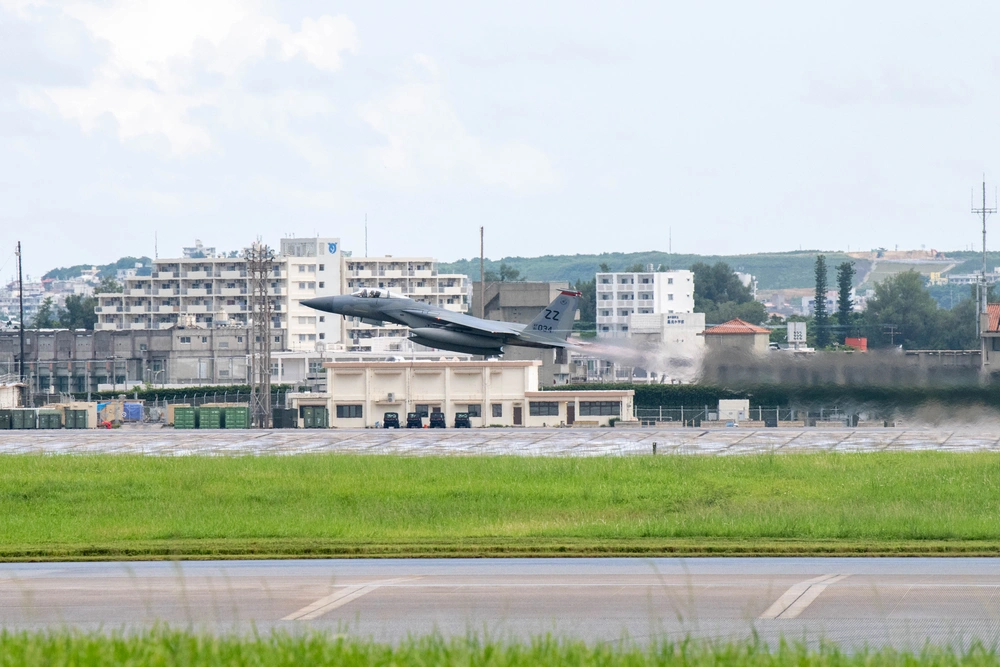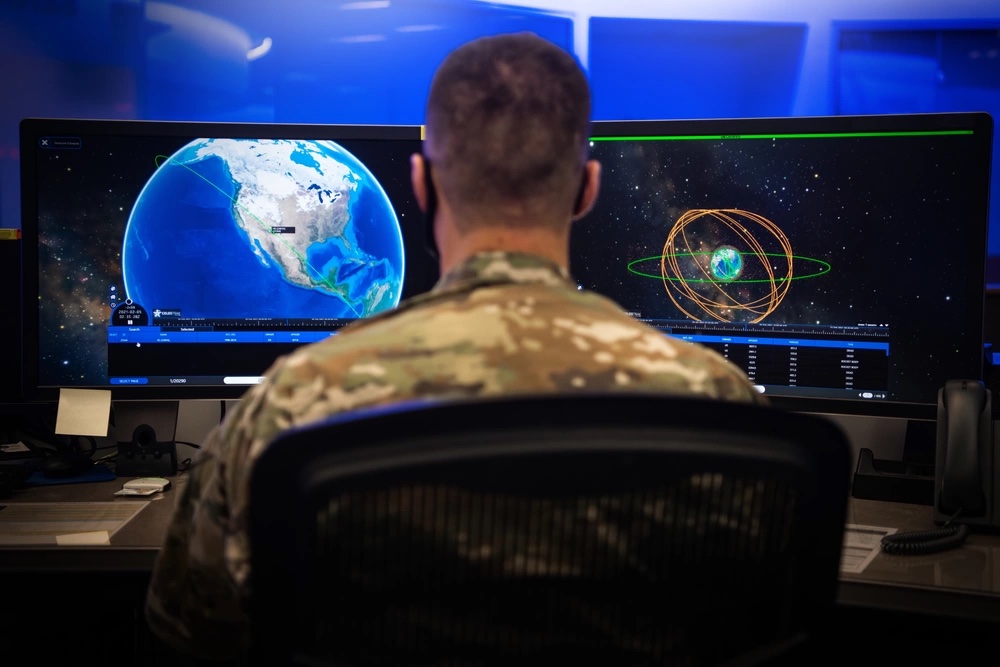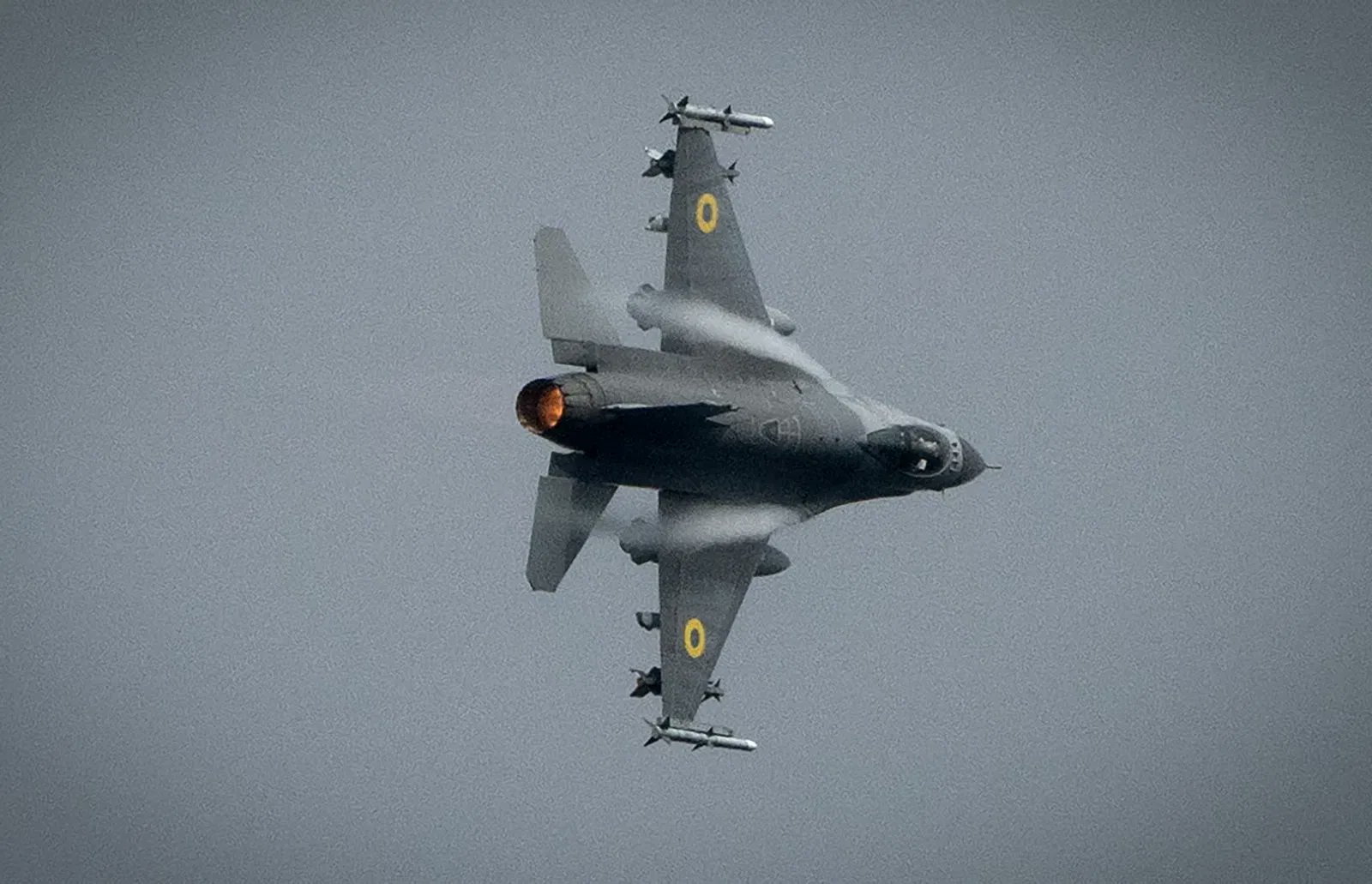McConnell Air Force Base in Kansas is back to full operations after a freakish “microburst” weather event on Aug. 24 injured multiple people but did relatively little physical damage to aircraft on static display for a planned airshow, base officials reported.
Around 10 people—base personnel and vendors—received minor injuries, according to local news media. The microburst occurred before the airshow opened Aug. 25 and the event was canceled.
“With the start of that rain and lightning, we asked the early arrivals to stay in their vehicles in the parking area off-base” a base spokesperson said. USAF personnel were also told to stay indoors because there was lightning within five miles.
“But that storm didn’t move. We had a period of about 2.5 hours of rain and lighting, coupled with wind gusts of up to 54 mph,” the spokesperson added.
The winds drove anything unsecured across the flightline, sweeping away tents, tables, chairs and portable toilets, and throwing debris at the nearly 80 aircraft on static display, representing most types in the Air Force inventory and a number of retired “warbirds.”
“The operators and maintainers with each military aircraft were able to each do complete inspections of their aircraft. No military aircraft received damage from Sunday’s microburst and all were able to depart McConnell,” the spokesperson reported. No further damage assessment is being done, he added.
“Most cleanup was accomplished Sunday, including the runway and taxiways. This allowed for the early departure of several aircraft which were present for the airshow,” he said. The 22nd Air Refueling Wing conducted a “FOD Walk”—for Foreign Object Damage—on Aug. 26 “and began receiving a few of its aircraft back that day.”
Another FOD Walk was conducted Aug. 27, “and then the base returned to normal flying operations.”
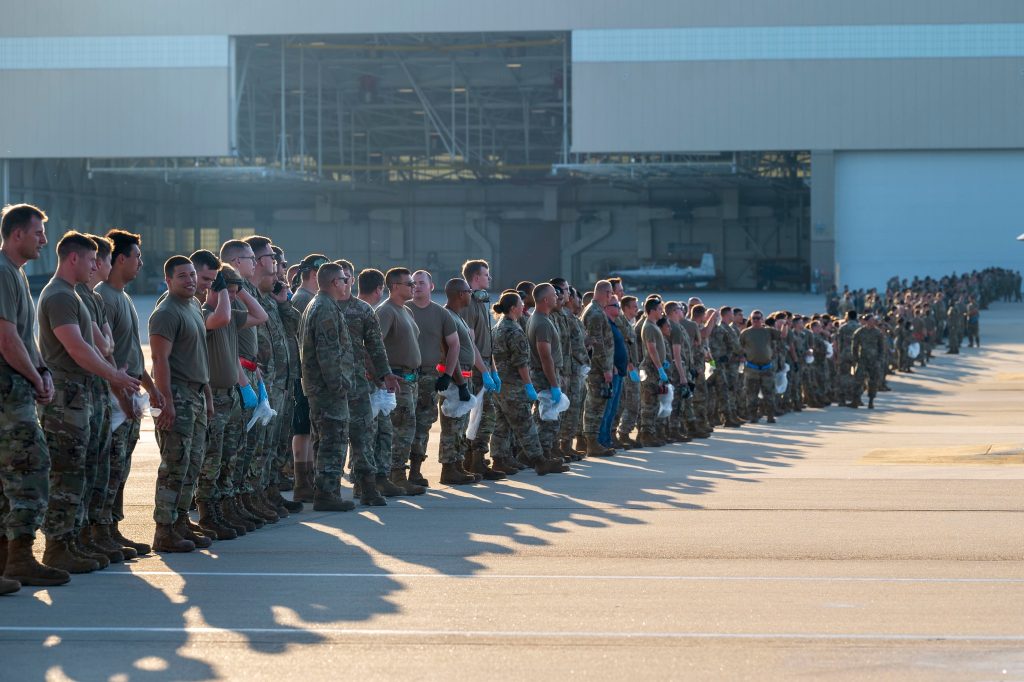
Of the aircraft that were struck with flying projectiles or flipped around by the winds, “most just need minor repairs,” the spokesperson said.
“The two receiving the most damage are the Commemorative Air Force Cessna UC-78 Bobcat, and the Cessna 150,” he reported. Photos of the latter aircraft flipped on its back circulated on social media after the storm.
That aircraft is “actually a privately-owned aircraft, painted with exceptional detail to resemble a Civil Air Patrol aircraft from an earlier era,” the spokesperson said.
The Cessna was righted by the 22nd Maintenance Group’s Crash Damage and Disabled Aircraft Recovery team on Aug. 25.
“The owner and several volunteers removed the aircraft’s wing today and loaded it on a flatbed truck, to take the Cessna 150 back to its home airfield, and it has since departed McConnell,” the spokesperson said.
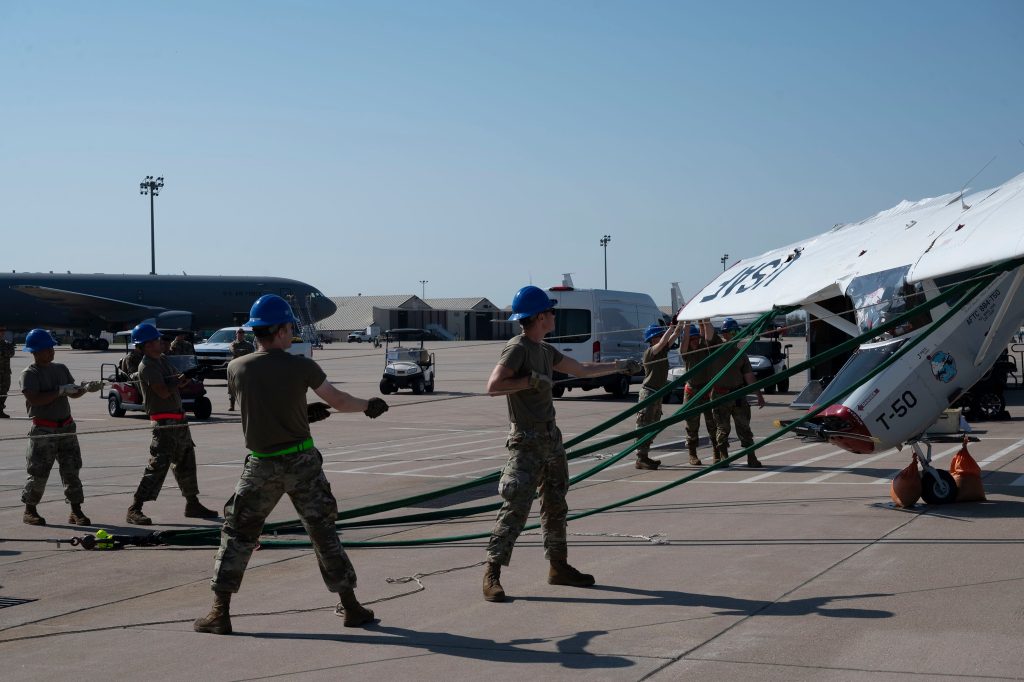
The Bobcat “sustained damage to its tail assembly when winds pushed it into a parked vehicle. We are working with the owners to determine the next step on repairs and transport,” the spokesman said. Two Stearman Model 75 biplanes, a CAP Cessna 182 from the Kansas wing, the Bobcat and a Kansas Highway Patriol Cessna 206 are remaining “on station” for further assessment.
“Our Airmen displayed some truly exceptional teamwork and commitment to respond to the damage to the airshow area, render the area safe, clean up the entire flightline and work with vendors and visiting aircrew,” the spokesperson said. “That allowed for an early departure of some visiting aircraft on Sunday, as well as Monday, along with the return of McConnell KC-135s and KC-46s to home station. The magic of Team McConnell was on full display this week.”
The lack of damage was lucky, as the static display included F-22 Raptors and F-35 Lightning IIs, whose stealth surfaces are extremely unforgiving of foreign object damage.
Types on static display included:
- Two Stearman Model 75 Biplanes
- One B-29 Superfortress “Doc”
- Two KC-46 Pegasus tankers, including the one which recently conducted a round-the-world flight
- One C-130J Super Hercules
- One A-10 Thunderbolt II
- Two F-15E Strike Eagles
- Two F-16 Fighting Falcons
- Two F-22 Raptors
- Two F-35 Lightning IIs
- One B-1B Lancer
- One B-52 Stratofortress
- One RC-135 Rivet Joint
- One T-38 Talon trainer
- One T-6A Texan II trainer
- One T-1A Jayhawk trainer
- One T-53 Kadet II
- One UH-60 Blackhawk
- One HH-60 Blackhawk
- One CH-47 Chinook
- One Boeing’s “Dreamlifter” supersize 747
- Cessna 421, 414, 310, 185, 182, 172, 150
- One Beechcraft Baron
- One Fairchild PT-19
- One A-26 Invader “Lady Liberty”
- One UC-78 Bobcat
- One Ryan PT-22 Recruit
